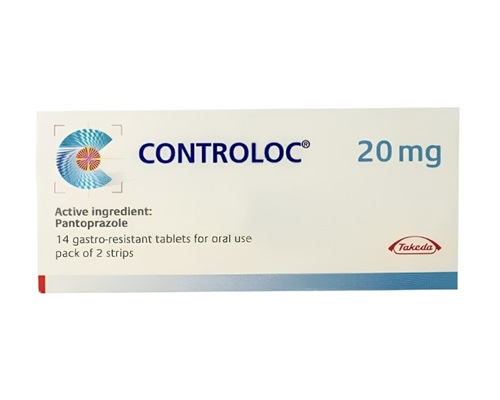Description
Trade name:
Zurcal
Compound:
Each tablet contains:
Pantoprazole 40 mg
Auxiliary components:
Sodium carbonate, mannitol (E421), crospovidone, povidone K90, calcium stearate.
Properties:
Pantoprazole is a substituted benzimidole that inhibits gastric hydrochloric acid secretion by specific blockade of the proton pump of the parietal cells. Pantoprazole is converted to its active form, a cyclic sulfenamide, in the acidic environment of the parietal cells, where it inhibits the enzyme H+, K+-ATPase, i.e. the final stage of hydrochloric acid formation in the stomach.
Indications:
Gastroesophageal reflux disease, reflux esophagitis;
Helicobacter pylori eradication (as part of complex therapy);
duodenal ulcer; gastric ulcer;
Zollinger-Ellison syndrome and other pathological hypersecretory diseases.
Method of administration and dosage:
Orally, before meals (usually before breakfast), with the required amount of water. The tablets should be swallowed whole, without chewing.
The dose is selected by the doctor depending on the diagnosis.
Adults and adolescents aged 12 years and older: 1 pantoprazole tablet per day. In some cases, the dose can be increased to 2 pantoprazole tablets per day. Usually 4 weeks of treatment are required. If necessary, the duration of treatment is increased to 8 weeks.
Children under 12 years:
Pantoprazole is not recommended for use in children under 12 years of age due to limited data on safety and efficacy in this age group.
Contraindications:
Hypersensitivity to pantoprazole, benzimidazole derivatives or other components of the drug. Concomitant use of atazanavir. Due to insufficient data, the use of pantoprazole for the treatment of children under 12 years of age is not recommended.
Precautions:
In the presence of any alarming symptom (e.g. significant weight loss, recurrent vomiting, dysphagia, hematemesis, anaemia, melena) and in the presence or suspicion of gastric ulcer, malignancy should be excluded, as treatment with pantoprazole may alleviate symptoms and delay diagnosis.
Further investigation should be considered if symptoms persist despite adequate therapy.
Side effects:
Side effects of the drug may occur in approximately 5% of patients.
The most common side effects are diarrhea and headache – they occur in approximately 1% of patients.
From the nervous system and sensory organs: uncommon – headache, dizziness, sleep disturbance. Rare – visual acuity impairment, depression (and aggravation). Very rare – disorientation, paresthesia. Frequency unknown – hallucinations, confusion (especially in predisposed patients, as well as exacerbation of these symptoms if they were present previously).
From the gastrointestinal tract: common – gastric polyps (benign). Uncommon – diarrhea, nausea / vomiting, bloating and flatulence, constipation, dry mouth, abdominal pain and discomfort.
Storage method:
In a cool, dry place at a temperature not exceeding 25 degrees.
Package:
The cardboard box contains 2 blisters of 7 tablets and paper instructions.









